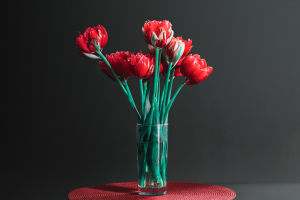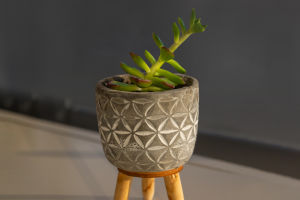Tulips are iconic spring flowers, celebrated for their bright, cheerful colors and distinctive cup-shaped blooms.
Native to Central Asia and beloved worldwide, tulips bring elegance to gardens, landscapes, and indoor arrangements alike.
However, they require specific care to reach their full potential. Whether you’re planting them in your garden or enjoying them as cut flowers indoors, here are the essential tips for providing the best care for tulips.
1. Choosing and Preparing the Bulbs
For the healthiest tulips, start with high-quality bulbs. Look for bulbs that are firm, large, and free from soft spots or mold. The larger the bulb, the more energy it has stored to produce strong, vibrant flowers.
When to Plant: Plant tulip bulbs in the fall, ideally 6-8 weeks before the first hard frost. This timing allows the bulbs to establish roots before winter sets in.
Soil Preparation: Tulips thrive in well-draining soil that’s rich in organic matter. If your soil is heavy or clay-like, consider mixing in some sand or compost to improve drainage. A soil pH of 6 to 7 is ideal, but tulips are relatively adaptable.
2. Proper Planting Techniques
Plant tulip bulbs pointed side up, about 6-8 inches deep, and space them 4-6 inches apart. Planting them deeply helps protect the bulbs from cold weather and pests, while spacing them properly allows for good air circulation and root expansion.
Watering at Planting: Water the bulbs immediately after planting to help establish roots. However, be careful not to overwater, as tulips don’t tolerate soggy soil.
Mulching: Apply a layer of mulch over the planting site to help regulate soil temperature and retain moisture. Mulching also deters weeds that could compete with tulips for nutrients.
3. Watering and Fertilizing Tulips
After planting in the fall, tulips don’t need much water until spring. Excessive watering in winter can lead to bulb rot. Once growth begins in spring, water tulips deeply but infrequently. Tulips benefit from moist (but not waterlogged) soil, especially as buds begin to form.
Fertilizing: Tulips do best with a balanced fertilizer high in phosphorus, which supports root development and flowering. Apply a slow-release, bulb-specific fertilizer at planting, or add bonemeal to the soil. If your soil is already rich, tulips may not need additional feeding.
4. Providing Light and Temperature Needs
Tulips thrive in full sun, so choose a planting location that receives at least 6 hours of direct sunlight daily. While tulips can tolerate partial shade, too little sunlight may lead to weak stems and smaller blooms. For indoor arrangements, place potted tulips near a bright window.
Temperature: Tulips are hardy to cold climates and benefit from a winter chill to promote blooming. In warmer regions, consider refrigerating bulbs for 12-14 weeks before planting to simulate a cold period, as this will help them bloom.
5. Supporting Tulips as They Bloom
Once tulips start to grow in the spring, they require minimal care beyond basic watering. If tulips grow tall and start to lean, especially in windy areas, gently support them with stakes.
Deadheading: As each flower fades, snip off the spent bloom, but leave the foliage intact. Deadheading prevents the plant from putting energy into seed production and instead redirects it to storing energy for next year’s bloom.
6. Post-Bloom Care
After tulips finish blooming, it’s essential to let the leaves die back naturally. The leaves absorb sunlight, which fuels photosynthesis, allowing the bulb to store energy for the next season. Resist the temptation to cut back leaves too early; instead, wait until they yellow and wither naturally.
If you live in a warmer climate, consider digging up the bulbs after the foliage dies back and storing them in a cool, dry place until fall planting. Otherwise, tulips in colder regions can be left in the ground, where they’ll likely return year after year.
7. Caring for Tulips Indoors as Cut Flowers
Tulips make stunning cut flowers, but they continue to grow and move in the vase. To keep them fresh:
1. Trim the Stems: Cut tulip stems at an angle, which improves water absorption.
2. Cool Water: Fill the vase with cool water, and change it every other day to keep the water clean.
3. Moderate Temperature: Display tulips in a cool room away from direct sunlight, heaters, and drafts, as high temperatures can shorten bloom life.
4. Avoid Ethylene: Tulips are sensitive to ethylene gas, so keep them away from fruit, which releases this gas as it ripens.
8. Dealing with Common Tulip Pests and Diseases
Tulips are generally hardy but can fall prey to pests like aphids, slugs, and rodents. Using a natural insecticidal soap can help control pests, while placing wire mesh over the soil can protect bulbs from rodents. Fungal diseases can also be an issue, especially in overly moist conditions, so ensure proper spacing and drainage.
Tulips are a joy to grow and maintain, bringing bursts of color and elegance to gardens and homes alike. By giving tulips the right conditions—such as well-draining soil, moderate watering, adequate sunlight, and thoughtful post-bloom care—you can enjoy these beautiful blooms for many seasons. With a little care, tulips can thrive and continue to brighten up your space, making all the effort worthwhile.
With these tips, your tulips are sure to be a stunning addition to your garden or home! Enjoy the beauty of these vibrant flowers as they bloom each spring.


